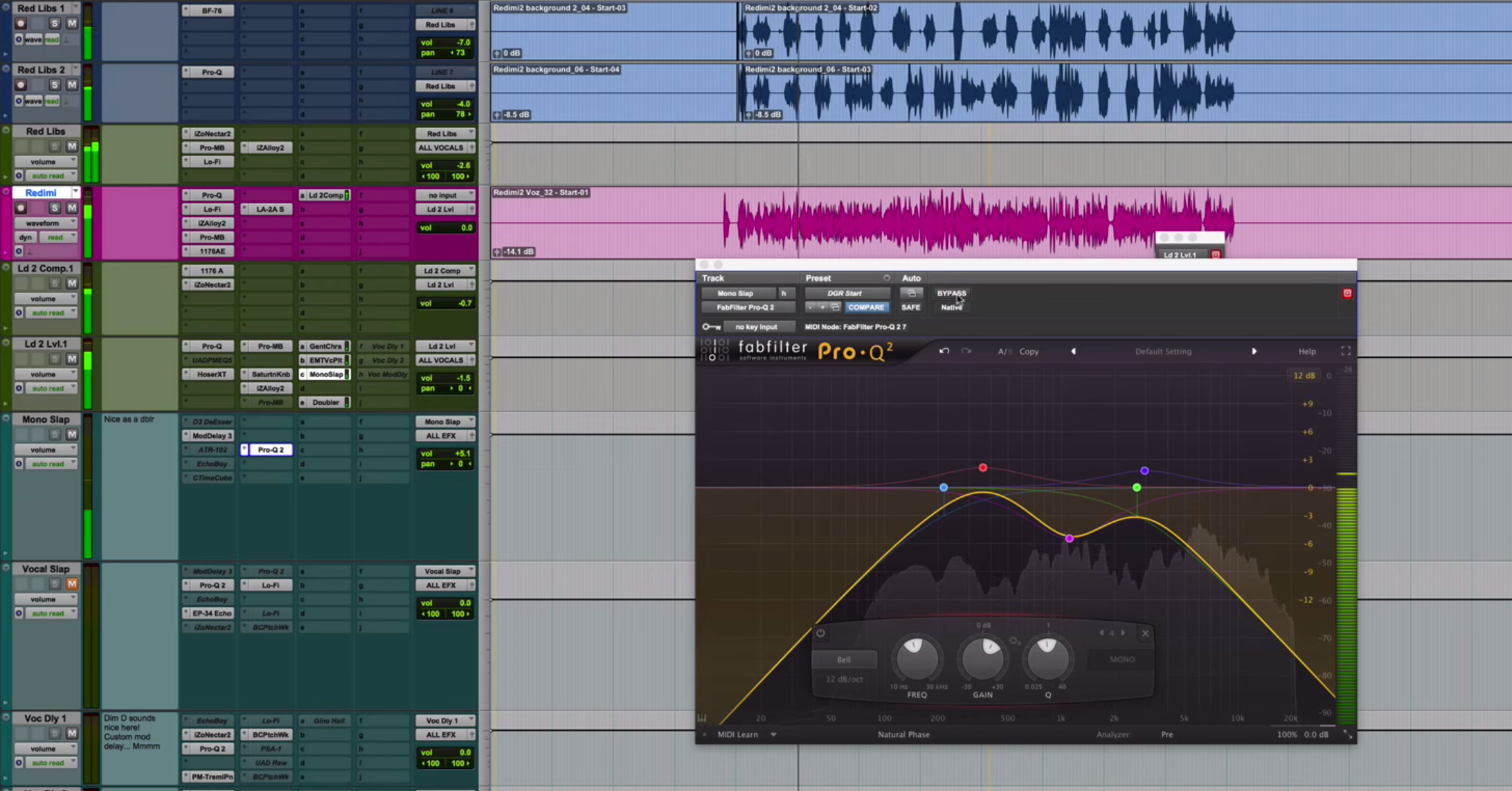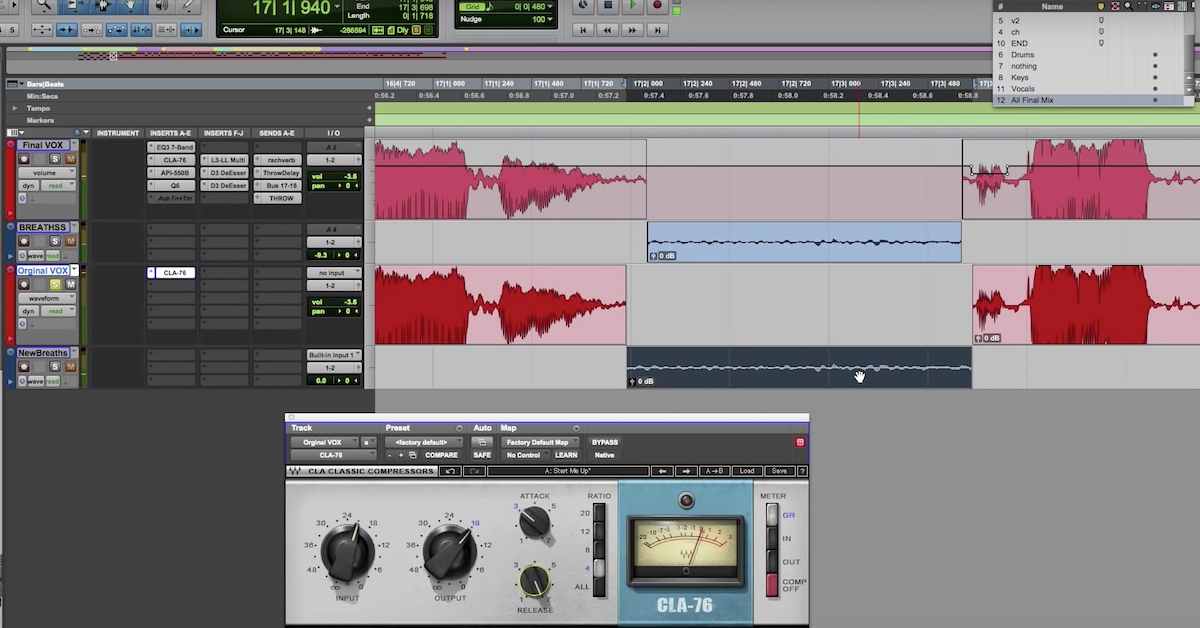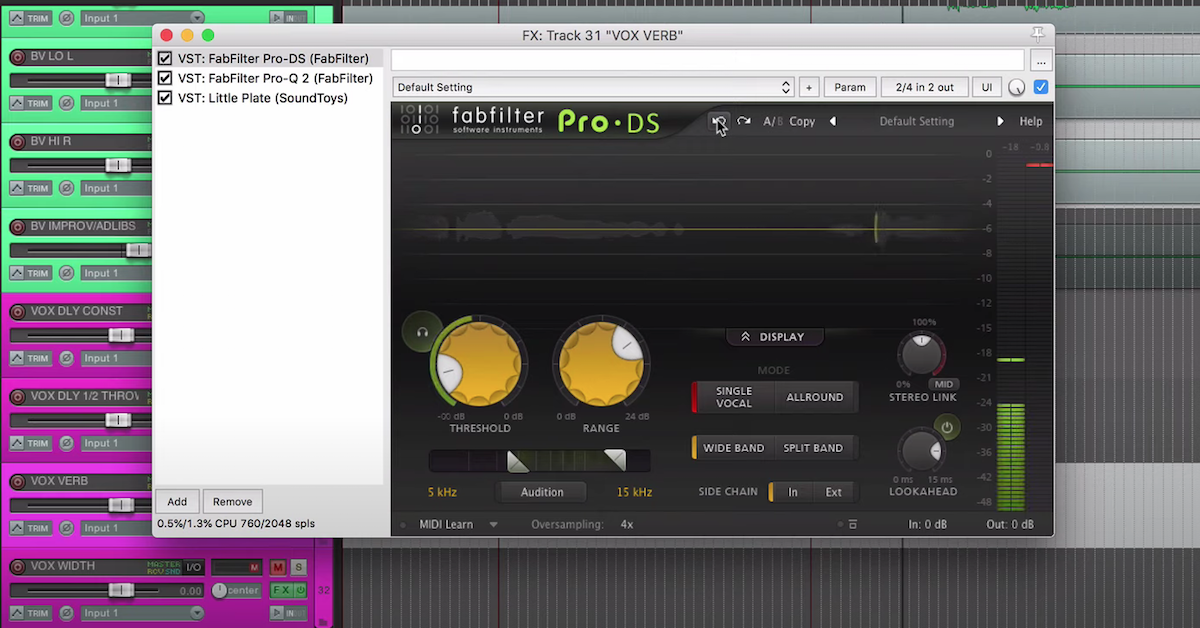3 Overused Vocal Production Techniques (That Aren’t as Cool as You Think)
Article Content
Before I started doing audio engineering and music production full time, I taught private music lessons for a few years. The experience informed my perspective on music and the relationships people have with it in a huge way.
My students had such strong connections to the songs they brought in to learn at their lessons, and it was obvious how much those connections were motivating them. Did I like the music they brought in? A lot of the time, no. But in order to do my job well, I had to find a way to share their enthusiasm for the music that inspired them. Having to do that, day after day, made me a much more open-minded person, and since then I’m generally much more positive about a wide variety of music.
Forget about that though. Today, I’m here to burst some bubbles, to rain on some parades, and to let you know that that production trick you think is so cool is actually kind of whack. Well, maybe anyway.
The thing is, I don’t think that anything in the world of music production works 100% of the time, but by the same token, I also don’t think that there are any production tricks that are total duds, either. In fact, the problem with some of the techniques I’ll discuss in this article is that they work so well that they’ve become overused. A consequence of that is that many people have used these tricks very skillfully, and have raised the bar for the rest of us as a result.
If you feel like I’m taking a dump all over your signature production moves, don’t take it personally. Most of the techniques I’ll discuss are ones I’ve used before, and chances are at some point I’ve used them in a way that would make me cringe now. So keep an open mind.
1. Heavily Auto-Tuned Vocals

These kids just heard T Pain for the first time
Beyond being a useful tool for polishing a pitchy vocal performance, Antares Auto-Tune (and similar plugins) used in a not at all transparent way has become something of a staple in modern production. Unless you are an Amish teen, reading this article on the first day of your rumspringa, you have absolutely heard this effect. The list of examples I could give is practically endless, but one song where I think Auto-Tune is used especially well is “Nikes” by Frank Ocean.
Why it’s cool:
Modern pop sounds unnatural. Note the period at the end of that sentence. Auto-Tune used in this way makes a vocal feel like it is of one piece with the artificial landscape of soft synths and heavily processed samples in which it lives. In “Nikes”, the heavy Auto-Tune is combined with other effects — formant shifts and tastefully automated reverbs (listen starting around 3:00) — to augment the feeling that the vocal is somehow alien in a way that feels exciting and compelling. Vocal treatment and textures constitute a big part of the movement and energy of the song, and it’s all executed very skillfully.
Why it’s not that cool:
People love to hate on this kind of Auto-Tune, and we’ve all heard those arguments before. “It’s covering up for bad singing!” While it’s true that pitch correction software helps tighten up pitchy vocal performances, it doesn’t have some magical power to turn truly awful vocals into gold. The heavy Auto-Tune effect works best when the vocalist is really compelling on their own, singing with nuance, feeling, and expression. It also works best when the singer actually has a clear sense of the melody, even if they aren’t singing every note 100% in tune. Productions can sound really amateur when autotune is used as a band-aid for a lifeless and meandering vocal performance. Spend 10 minutes scrolling through the Catatonic Youths instagram account for some truly bizarre examples of this if you don’t believe me.
2. Megaphone Vocal
The “megaphone vocal” trick became prominent in rock music production in the 90s, and it remained a staple of the “modern rock” sound for a while. Though you may have seen singers actually using megaphones on stage to produce this effect live, the studio version is achieved a little differently.
Typically it involves combining some fairly heavy saturation with high and low-pass filters to create a sound that is both distorted and “small” or “narrow.” You have almost certainly heard this effect used in the intro to The Killers’ “Mr. Brightside.” There’s an even more pronounced example at 1:50, in the second verse.
Why it’s cool:
This trick is a great way to heighten the sense of dynamics in a song. By creating an artificially small lead vocal, the song becomes more intimate, pulling the listener in. This sense of increased dynamic range can be especially potent because often, modern productions don’t actually have much real dynamic range. Many modern songs get loud quick and stay loud — leading to the sausage/turd-shaped waveform you’ll find on many SoundCloud pages. Playing with things like the fullness of the frequency spectrum in the song is a great way to give the sense that there are dynamics happening without compromising on loudness. In the example above, this vocal processing trick makes the intro feel like it’s building to something, creating a sense of anticipation. When it returns for a moment in the second verse, it’s like a breath of air before the intensity ratchets up.
Why it’s not that cool:
This trick has been done to death, and honestly, it’s already a bit past its sell-by date. I think the megaphone voice tends to play like a crutch when an arrangement doesn’t have enough movement and variety on its own. Like many of the techniques on this list, I think this one has the potential to be really effective — but only when it’s used to enhance a song that already works. If the megaphone trick is the most interesting thing going on with the vocals, your song might be in trouble. Beyond that, we’ve been in the midst of the loudness war so long that I think anything that enhances the actual dynamics of a song is a much more bold choice than something that creates artificially perceived dynamics like this trick.
3. Doubled Lead Vocal
I love doubling things! I love it so much I wrotea whole article about it. Doubling (or tripling, quadrupling, etc) lead vocals is such a common production move that we often don’t notice it in songs. There are lots of ways doubled lead vocals can be used effectively. One common vocal doubling style could be called a “character double,” where the subtle inconsistencies of a doubled vocal add motion to the part, creating a sometimes spooky effect. John Lennon’s music provides many examples of this kind of doubling.
This type of doubling is pretty different from the sort of “big pop vocal” doubling you might find in a Mariah Carey song. Here, the takes are much tighter and more precise, creating the effect of a big backup vocal section. Listen to the stacks of vocals in the intro.
Why it’s cool:
Lennon’s vocal in this song is an example of the kind of doubling that enhances the movement and depth of a part (see my article for more on that). The vocal feels elusive, ghostly, constantly shifting in the landscape of the song. The secret to making this work is hitting a sweet spot between consistency and inconsistency between the doubles. The inconsistency between the takes creates a part that feels bigger and more dynamic, but the takes are grounded enough that the two takes don’t step on each other, masking the part. The Mariah Carey example represents a pretty different effect. There, the takes are super consistent, causing them to work more as one and create a much bigger vocal sound.
Why it’s not that cool:
No matter what the intention is for a vocal double, it isn’t going to fix a truly bad performance. Adding a second, obviously out of tune vocal track, to another obviously out of tune vocal track, is not a recipe for magically not noticing how out of tune those vocals are. With regards to timing, that sweet spot I mentioned above is also pretty important to making this trick work. If the timing is too loose between the doubles, it’s easy to end up with a jumbled mess.
Conclusion
As effective as some of these vocal production tricks can be, none of them are magic bullets. When I hear these techniques used in a way that makes me cringe, it’s usually because that one production cliché is the only thing keeping the vocal from sounding like a nakedly bad performance. It may be that a vocal requires a lot of processing to sit how it needs to in a song. In fact, that may be the case more often than not. When I hear a vocal really come to life with processing, though, it’s usually achieved in a way where no one effect is doing all the heavy lifting.
Some of my favorite singers have pretty unconventional voices, and by no means would I argue that a recording has to feature a traditionally strong singer to be compelling. If anything, I find that it’s most effective to embrace vocal quirks rather than trying to erase them. Imperfections are human, and vocals are the most human element of any song. If you absolutely have to transform a vocal with processing, try to make that processing have as much nuance and depth as the voice does itself. There’s no preset on any plugin that gets you there in one step.
Did I miss anything? Let me know about any vocal production tricks you think are played out in the comments! Look for a follow-up article soon where I’ll be taking a look at the most overused instrumental production tricks.









